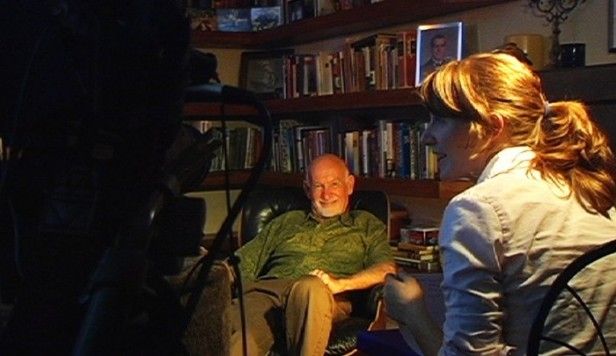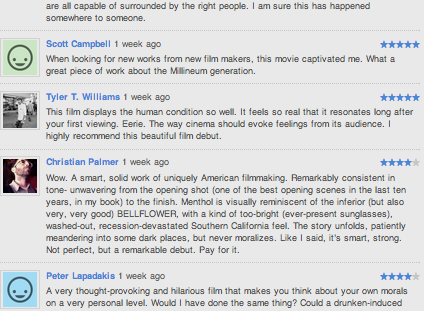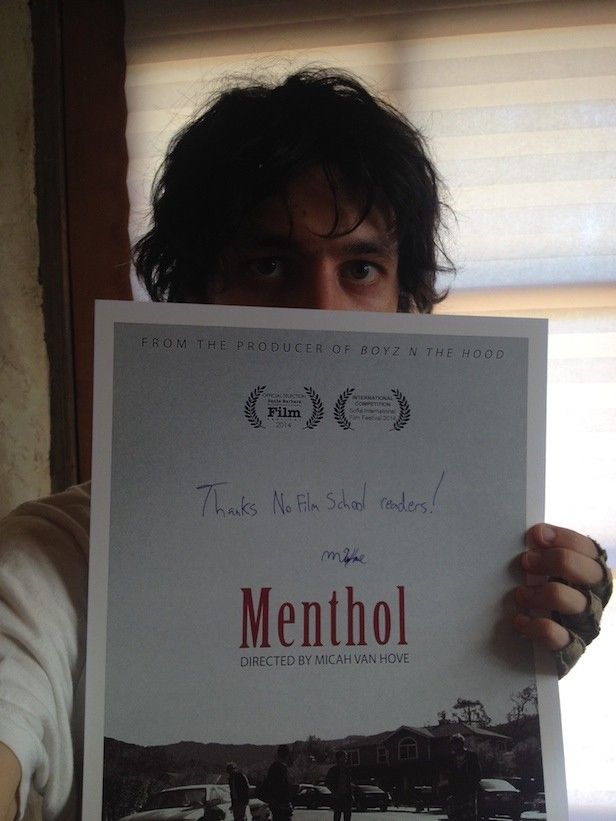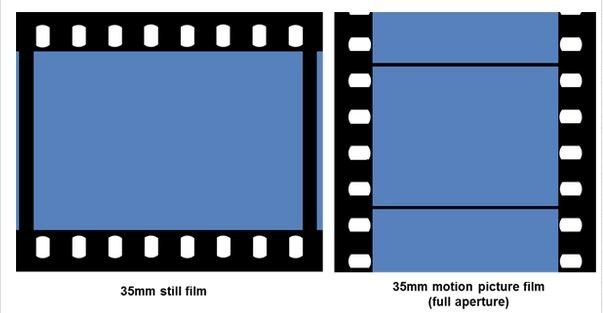What I Learned After Conducting 40+ Interviews for My First Feature Documentary

You’ve got a great idea for film, and it just so happens to be a true story. Best of all, the main character is fantastic and you can’t wait to get him or her on camera! But once you start rolling, and sit back and wait for the magic to happen — pfft. Your interview is a dud. What went wrong? Getting a person’s story on camera is an elusive process, and since I just spent over five years working on a short and a feature in which I conducted over 40 interviews, I thought I’d share a list of things that I picked up along the way that might help you.
Among other things, you may know me on No Film School for written and occasional video interviews I post. I’ve always enjoyed hearing what people have to say, and listening to people’s stories. As fellow artists, maybe you feel the same. Over the years, I’ve gotten to hone that craft, from interviewing upstart inner city skateboarders for Nike’s PlayCity or talking to astronomers scanning the dark skies in Northern Arizona. I started doing interviews in 2008 for my feature documentary Brave New Wild that I’m just now starting to show. (As in, one festival, where I received the Emerging Artist award from the festival director.) A huge part of the film’s strength comes from the interviews. I’m certainly not saying I’m an expert, but there is some method to the madness! Hopefully the following tips can give you a head start on the learning curve for your next on-camera interview.
Decide on the concept of your film, and therefore, the concept for the interviews.
This sounds obvious, but all too often filmmakers think, “It’s an interview, that IS the concept.“Really? So just set up the camera anywhere and have somebody talking in front of it? This is partly why documentaries get such a bad ‘talking head’ wrap. Different interview strategies elicit different kinds of tone to your film. For my aforementioned film, which with any luck I can share with you by the end of the year, I did my interviews as single camera setups by campfire light, not only because it was organic to the world of the story (rock climbing outcasts of the 1960s), but also because it allowed for intimate conversations that transported both the person talking, and in turn, the audience, to a world from the past.
In These Birds Walk, the camera follows around a group of orphans at eye level with prime lenses to create the children’s close-quartered world. In Yakona, the captivating underwater cinematography does most of the talking for the San Marcos river itself. And for numerous films including The Fog of War, clever bloke Errol Morris even went to far as to invent the likes of the Interrotron — you know, that telemprompter-like contraption on which Errol projects his face so his subjects can talk to him directly and into the camera.
Are you the best person to conduct the interviews?
If you’re the director, you’re probably the narcissistic egomaniac for the job! (And in documentary, let’s face it, can you really afford to pay someone else to do it?) However, it’s worth thinking about. For example, Jose Antonio Vargas elected to have a tagalog-speaking producer interview his Filipino relatives in Documented to give them space to reveal anything they wanted, while Lacey Schwartz cross-examines her entire family herself to unravel a quixotic family mystery in Little White Lie.
Discuss the eyelines, framing, and camera setup with your DP ahead of time.
Treat it the same way you’d go over the storyboard or a shot list with your DP to direct a scene. This is when you let your team know, say, that you’ll be shooting everything locked offlike in DamNation. Or in a verité setting, maybe you can come up with shooting rules for your DP to establish the aesthetics of the film like Rodrigo Reyes in Purgatorio. You probably decided these kinds of details when you envisioned the concept, but just in case, go over it with your team. The last thing you want is to spend more time setting up for an interview than you do with the cameras rolling.
Prepare for what you want out of the interview.
Sure, in documentary the content is often discovered during production, but you should still have an idea of what the story is going to be, and how it might fit into a narrative arc. This doesn’t necessarily mean doing tons of research with prepared questions for every interview. (I do because it makes me less nervous, but Warren Etheredge, who has interviewed about a million famous people, mentioned to me at a film festival that he never goes in to an interview with prepared questions!) Being prepared should mean knowing what role the person should be playing in your film, and what you need out of the interview. Do you need them to talk about a specific event or topic? Are they being interviewed in order to characterize another person? Are they meant to show you how they react with their surroundings? Stuff like that.

Don’t do pre-interviews.
Some people may disagree with me on this, but in my experience, normal people only have one good ‘take’ in them when it comes to interviewing. Save it for the camera! Sure, when you pause for a bathroom break, your interview subject will suddenly blurt out the meaning of life. (Naturally, he/she was at that moment unmic’d and the camera wasn’t rolling. Which reminds me, another good tip: keep the camera rolling.) Ask him/her to repeat it on camera. Otherwise, try not to have your subject repeat themselves.
Forget about the old adage of asking your subject to “answer in complete sentences.” Instead, ask a question that will naturally elicit a complete thought.
Say for example, you want to ask someone about an instance you heard about that happened in 1994. In a print interview, it doesn’t matter whether the answer is a complete sentence, but on camera, you need a complete sentence to edit with. Traditionally, if you tell a person to answer in a complete sentence, they will remember and answer like this:
Q: In 1994, you had your first encounter with a three-headed alien, what was it like?A: In 1994 when I had my first encounter with a three-headed alien, it was really great –
What is this, grade school? Even when you ask a person to include the question in the answer like this, most forget pretty quick. And interrupting someone to ask them to start over can really mess up an interview. In my opinion, a better plan is to get in the habit of asking questions that demand a complete answer — questions that are vague, yet going in a specific direction. For example, knowing that you want your subject to talk about that three-headed alien from 1994:
Q: What kind of aliens do you think are hanging out here on planet Earth?A: Well, all kinds! I mean…I’ve seen three different kinds of aliens just myself.Q: Really, what kinds have you seen?A: I’ve seen the normal kind with big eyes like in the X-Files, the small green men, and I once saw a three-headed alien. Boy was I excited about that one! I was in my truck on the I-40, it was July 4th, 1994, and all of a sudden –
Don’t lead with your toughest question.
Unless you are going for some kind of court-room exposé, and are trying to reveal how a person reacts under pressure, that is. Your subject has already agreed to sit down and let you interview them. That’s already very generous. It’s then up to you to earn their respect and their trust before you can expect to have a real conversation.

Watch out for runaway interviews.
Sometimes when the camera starts rolling, an otherwise very normal person gets the feeling they are supposed to be talking, so they start and never stop! This is a normal reaction. Most people aren’t used to being interviewed. And then there are those people who just like to dominate the conversation and go on any tangent they see fit.
Say you wanted to interview Subject A about the architecture of the NY subway system, and he just spent 20 minutes on a rant about alien encounters! For either type of person, it’s up to you to set the tone at the beginning of the interview that you will be directing this conversation. An easy way to do this is to start off your interview with interruptions. Right away the other person knows that the two of you will be having a conversation, instead of him/her giving a monologue.
Don’t rush through awkward pauses.
On the other end of the spectrum, there is silence. As an interviewer, you are working so hard to make your subject feel comfortable that the last thing you want are awkward pauses. However, there are some people who need that silence. They need it to think, and they need it to decide to tell you something that you otherwise might roll right past. There are some fantastic moments gotten this way in The Immortalists. I’m not saying you should purposefully leave quiet pauses during interviews, but be open to it.

Remember that people get tired.
After three hours of talking, an interview subject can become so exhausted that their sentences start coming out as if they’ve been throwing back a few too many malty Scotches (maybe they have) or their demeanor suggests they are premeditating murder to get you out of their house. That footage isn’t useable! Just like you would schedule how many scenes you can film in a day, so you have to be realistic about what you can cover in one interview session.
Be brave enough to ask about what really matters.
If you’re terrified, you’re doing it right. It’s hard! In the end, don’t be discouraged if the interview bombs or you chicken out on some questions. Work up that courage for round two, and give it your best shot!
In the end, different filmmakers may have different tactics for interviewing, but these help me and I hope they help you!
My personal philosophy for interviewing is built on respect for people, even if I disagree with them, don’t like them, or find them antagonistic. I never look at an interview as a way to expose or ridicule someone – it’s incredibly easy to exploit people on camera. And for what? The complexities of the human experience are so intricate that if art is not embodying that complexity or challenging it, then there’s not much point.
Have you had positive or negative experiences interviewing people on camera? Have any tips of your own to add?
Links:







